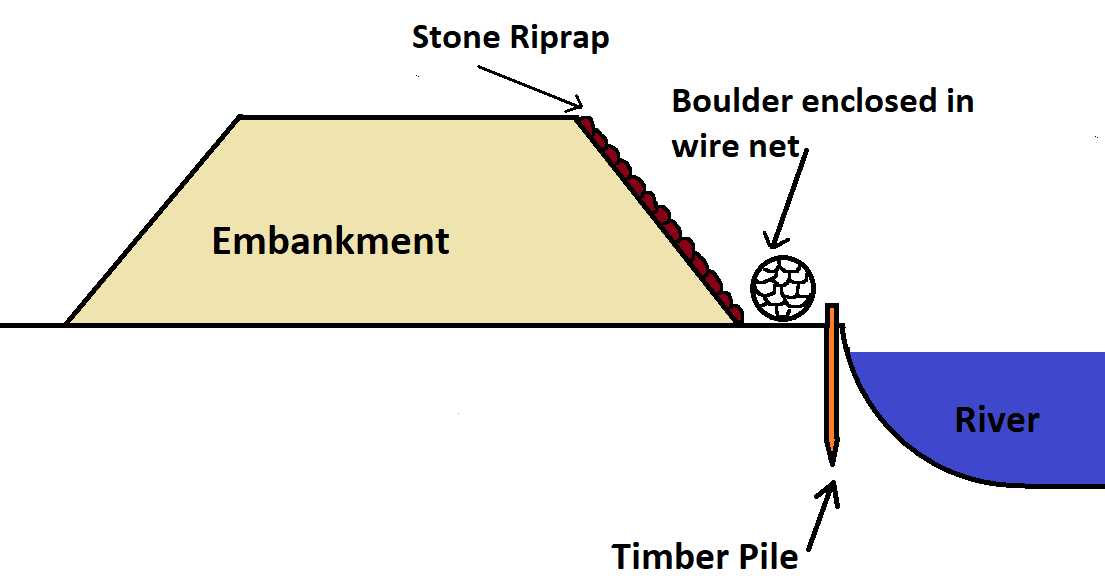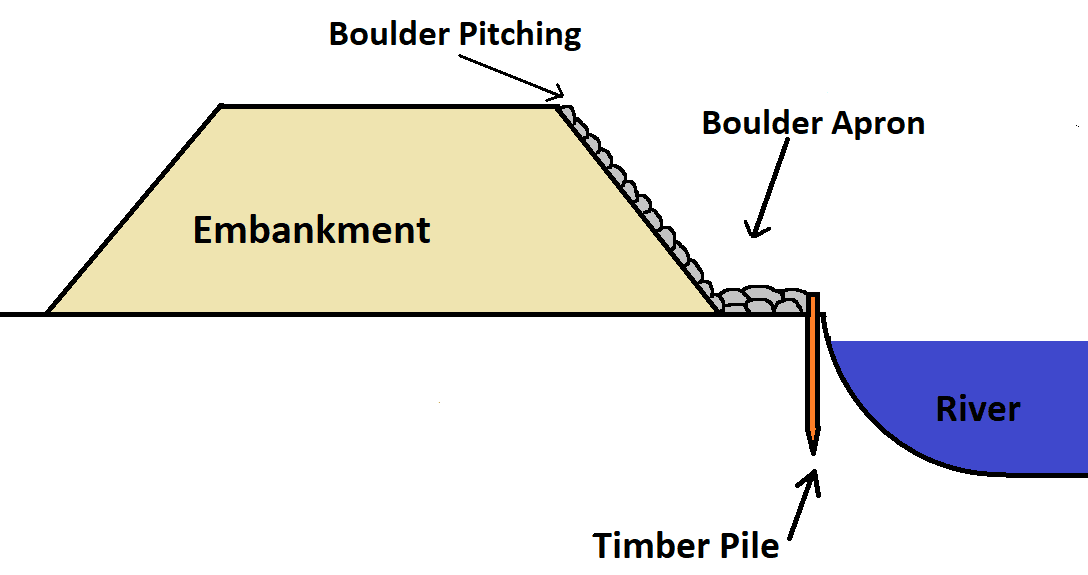Methods of River Bank Protection
4 methods of river bank protection are as follows:
- Brick Pitching
- Stone Riprap
- Boulder Pitching
- Concrete Slab Lining

1. Brick Pitching
In this method of river bank protection, first of all, around 3m length of bamboo or timber piles are driven along a line about 1 m away from the toe of the river embankment, and the center to center distance between one pile and the next pile is kept 15 cm.
The layer of brick flat soling is provided on the space between the toe and the pile line. Then usually, 15 cm thickness of cement concrete (1:3:6) is laid over the brick flat soling on the room between the toe of the embankment and the pile line.

The sloping side of the bank is protected by double-layer brick pitching with cement mortar of 1:6 ratio.
2. Stone Riprap
In this method of bank protection, Around 3 m length of timber piles are driven at 1 m center to center along the line about 1 m away from the toe of the embankment. The piles are projected about 45 cm above the ground surface.

Then the boulders enclosed in wire net is provided along the space between the toe and the pile line. And for the protection of the sloping side of the embankment, stone riprap finished with cement mortar is provided.
3. Boulder Pitching
In this method of river bank protection, around 4 m to 5 m length of timber piles are driven at 1 m center to center, along the line about 1 m away from the toe of the embankment. The piles are projected about 50 cm above the ground surface.

Then, within the space between the toe and the pile line, two layers of boulder apron are provided. The sloping side is lined with boulder pitching which is finished with cement mortar.
4. Concrete Slab Lining
In this method of bank protection, A wall is constructed along the bank of the river. This type of wall is called the toe wall.
Then the concrete slabs are placed on the space between the toe of the embankment and toe wall, and it is set by using cement mortar. The sloping side of the embankment is lined with concrete slabs, and joints are finished with cement mortar.

Depending on the site condition, concrete slabs may be of different sizes. Usually, the size of the concrete slab (50 cm X 50 cm X 10 cm) is used.
Read More: